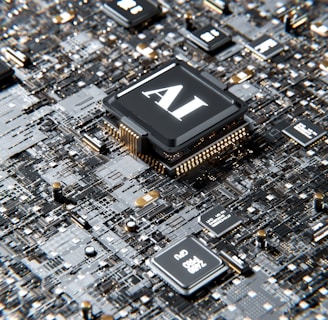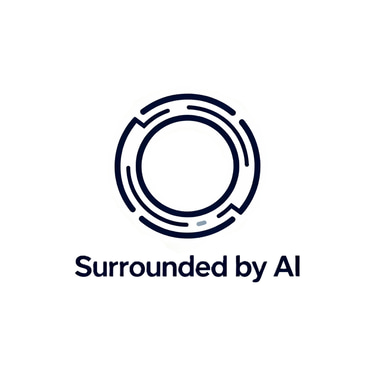The History of Artificial Intelligence
The beginning of Artificial Intelligence. All the scoop on how did we get to where we are today?
HISTORY
10/30/20253 min read


Artificial Intelligence, or AI, did not appear overnight. Its roots trace back centuries, to humanity’s timeless fascination with machines that could think, reason, and create. The long road to today’s intelligent systems began with ancient myths, accelerated through postwar mathematics, and evolved into the digital revolution shaping our world.
Ancient Dreams and Early Ideas
The idea of creating artificial beings dates back to ancient civilizations. Greek myths spoke of Hephaestus, the god of technology, crafting mechanical servants that could move and think. In China and Egypt, early inventors built automatons, mechanical birds, moving statues, and self-operating vessels that hinted at humankind’s desire to imitate life.
During the 13th century, scholars began exploring the mechanics of thought. Philosophers like Ramon Llull and later René Descartes speculated on logic, reasoning, and the notion that human thought might one day be expressed through symbols and algorithms.
The Mathematical Foundations
The true intellectual groundwork for AI did not emerge until the early 20th century. Mathematicians like George Boole introduced symbolic logic, proposing that reasoning itself could be expressed in mathematical form. Later, Alan Turing took this concept further with his famous 1936 paper introducing the Turing Machine, a theoretical model for computation that could process logical operations.
Turing’s ideas would later inspire the central question of AI: can machines think? In 1950, his paper “Computing Machinery and Intelligence” proposed what we now call the Turing Test, a way to determine if a machine exhibits humanlike intelligence through conversation alone.
The Birth of Modern AI (1940s–1950s)
World War II spurred innovation in computation. The development of early computers such as ENIAC and Colossus proved that machines could process enormous amounts of data faster than humans. These breakthroughs encouraged researchers to imagine computers that could not only calculate but also reason.
In 1956, a pivotal event solidified the field’s identity: the Dartmouth Summer Research Project on Artificial Intelligence. Organized by John McCarthy, Marvin Minsky, Nathaniel Rochester, and Claude Shannon, it gathered leading thinkers to explore one idea, teaching machines to simulate human learning. McCarthy, who coined the term Artificial Intelligence, envisioned computers capable of forming concepts and solving problems independently.
The Early Decades: Hope and Hard Lessons
The 1960s brought optimism. Early programs like Logic Theorist (1955) and ELIZA (1966) demonstrated that computers could problem solve and simulate conversation. Governments and universities poured funding into AI research, driven by the belief that human level thinking machines were just around the corner.
However, the 1970s brought disillusionment. Computers of the time lacked the power and data needed to fulfill AI’s lofty goals. Funding dried up in what became known as the AI winter. Yet, research quietly continued underground, particularly in expert systems that encoded human expertise into rules-based software. These systems would later fuel commercial success in the 1980s.
The Rise of Machine Learning (1980s–1990s)
By the mid 1980s, AI was evolving beyond symbolic logic. Researchers began focusing on machine learning, computers improving through data patterns rather than strict programming. Neural networks, inspired by the human brain’s structure, reemerged thanks to new computing power and algorithms like backpropagation. Though limited at first, they laid the groundwork for deep learning decades later.
In the 1990s, AI made public headlines again. IBM’s Deep Blue defeated world chess champion Garry Kasparov in 1997, showing that machines could master complex strategy. Meanwhile, advances in robotics, natural language processing, and computer vision hinted at a deeper potential: AI systems that could adapt, recognize, and interact with the physical world.
The Data Revolution and Modern AI (2000s–Present)
As the internet expanded, so did data, and data became AI’s fuel. Around the 2010s, improvements in computing, especially GPUs, and the explosion of online information empowered algorithms to learn at astonishing scales. Deep learning and neural networks experienced a renaissance, enabling breakthroughs in image recognition, speech processing, and translation.
AI made daily life smarter. Voice assistants, recommendation systems, and self-driving prototypes became not only possible but practical. Companies like Google, OpenAI, and DeepMind pushed frontiers in generative models, teaching machines to produce text, art, and code with uncanny realism.
By the 2020s, AI had transformed from an academic curiosity into a global force shaping medicine, economics, education, and creativity. What began as a philosophical question, can machines think, had evolved into a technological era where machines not only think but also learn, adapt, and even create alongside humans.
Looking Back, Looking Ahead
The journey of Artificial Intelligence reflects human ambition itself, a desire to replicate and extend the power of reason. From ancient myths to neural networks, AI’s story is one of imagination meeting mathematics, theory materializing as technology.
While we marvel at AI’s progress, the essence of its history remains profoundly human, our drive to understand the mind, to build tools that expand its reach, and to pursue knowledge beyond our own limitations. The beginning of AI was not in the lab or the computer but in the centuries-old curiosity to make thought itself tangible.
